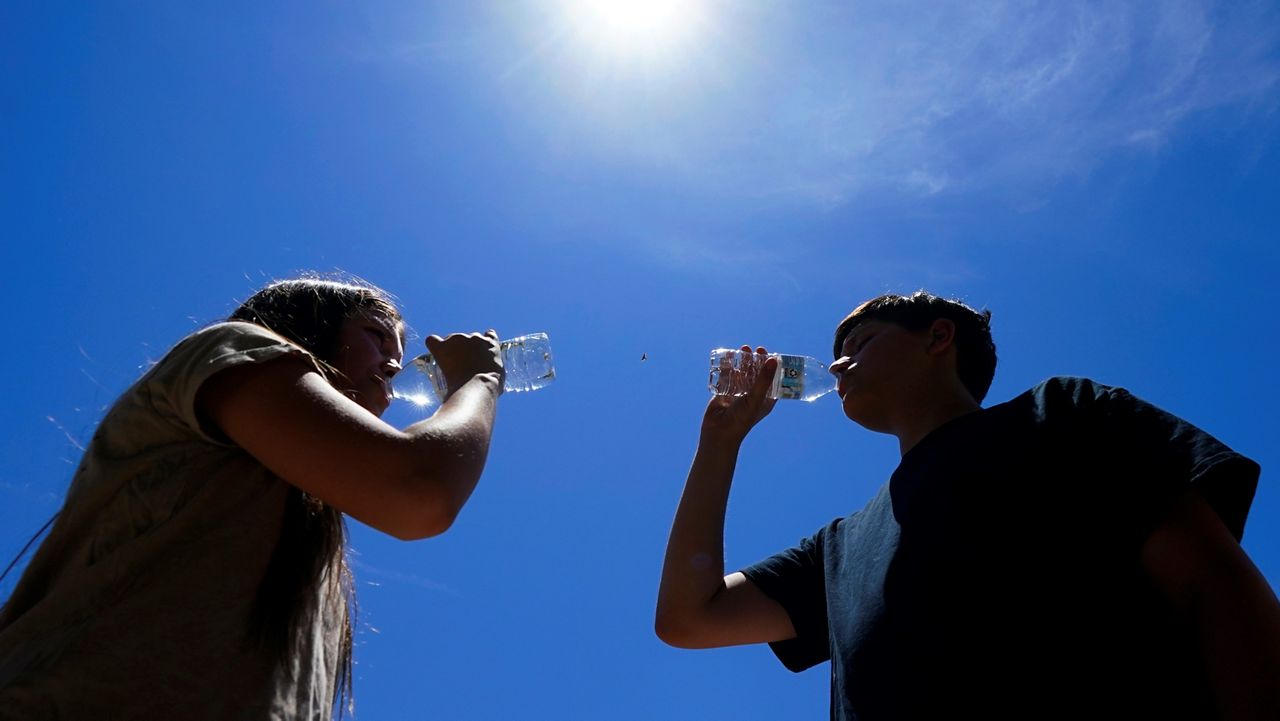With much of the country continuing to broil from excessive heat, a new study finds some cities absorb and retain more heat than others.
Nine U.S. cities are home to at least a million people where some areas are at least 8 degrees hotter because of their dense concentrations of pavement, buildings and other surfaces, according to a new report released Wednesday by Climate Central, a nonprofit climate research group.
New York tops the list with the most residents experiencing the so-called heat island effect. Houston, Los Angeles, Dallas, Chicago, San Antonio, San Diego, Phoenix and Detroit round out the top U.S. cities where a 90-degree day feels like 98 degrees because of the heat island effect.
For its study, Climate Central researchers looked at land cover data in each city, as well as building heights and population densities. It found that the amount of light radiated from a surface, the percentage of green space in a city and its population density had the greatest influence on urban heat islands.
Roads, sidewalks, buildings and parking lots all absorb more sunlight that is radiated back into the city as heat. Large bodies of water have a similar effect, increasing heat islands in urban areas along the coast.
Cities including Las Vegas, Philadelphia, Indianapolis all had more extreme concentrations of heat intensity in their urban cores relative to the less developed areas that surround them, the study found. But other cities had heat intensities that sprawled beyond the city’s center, including Dallas, Detroit, Houston, Los Angeles, Memphis, Miami, New Orleans, New York City, Phoenix, Portland, Seattle and Washington, D.C.
A 2021 study published in the journal Nature found that people of color and individuals living below the poverty line are disproportionately exposed to urban heat islands in the nation’s largest U.S. cities. Black and African American individuals are 40% more likely than non-Black and non-African Americans to live in areas with the highest projected increases in extreme heat as the climate warms, according to the U.S. Environmental Protection Agency.
Climate Central says planting street trees and installing cool roofs and pavement can help reduce heat islands. Plants and trees can decrease peak summer temperatures by 2-9 degrees in urban areas, the study found, whereas hard, dark surfaces absorb and radiate heat into cities.
The air conditioning used to cool cities down also adds to the heat index, adding 20% more heat to the outside air.



